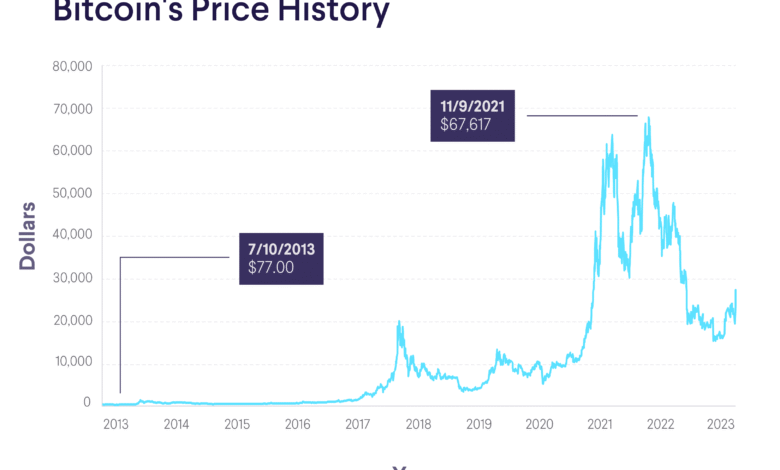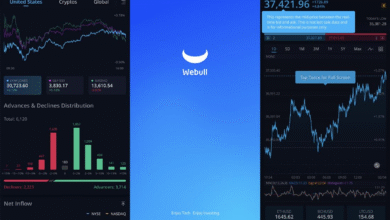Bitcoin Price Analysis: Consolidation Phase Insights

Bitcoin price analysis remains a pivotal focus for traders and investors as the cryptocurrency navigates its recent market fluctuations. As of August 17, 2025, Bitcoin’s price reflects a precarious consolidation phase, hovering around the $118,000 mark with substantial trading volume. Analyzing the technical aspects of Bitcoin can provide critical insights into potential price movements, paving the way for informed Bitcoin trading strategies. Amidst ongoing cryptocurrency trends, the recent daily chart indicates key resistance levels that traders should watch closely—specifically, the crucial mark at $119,000. This exploration of Bitcoin price prediction and broader market conditions will help us understand the potential implications for future trading decisions.
When examining the dynamics of Bitcoin in today’s digital currency sphere, an in-depth overview of its market behavior is essential. Recent shifts in Bitcoin valuations underscore the importance of understanding price trends and their impact on investment strategies. The current market landscape reveals a balance of support and resistance levels that inform possible future movements. Investors seeking clarity amid volatility can benefit from robust technical analysis of Bitcoin, assessing both short-term fluctuations and long-term price outlooks. Staying informed about price predictions and market sentiment is crucial for maximizing opportunities in the ever-evolving cryptocurrency space.
Bitcoin Price Analysis: Current Trends and Predictions
As of August 17, 2025, Bitcoin’s price analysis reveals a significant consolidation phase, sitting at $118,351 with a market cap of $2.356 trillion. Following considerable volatility, the price has stabilized within a tight range, indicating uncertainty among traders. This stability comes after a previous peak of $124,517, demonstrating both the bullish sentiment that initially attracted investors and the bearish pressure that triggered sell-offs. The price action suggests that traders are closely monitoring key resistance and support levels, which may set the stage for future movements in the cryptocurrency market.
Technical indicators are crucial for understanding the Bitcoin price prediction. Currently, the support range between $117,000 and $118,000 remains strong, but any signs of weakness could provoke a downward trend. A breakout above $119,000 with higher trading volumes could lead to a recovery toward levels around $121,000, while a breach below $116,500 would likely reinforce a bearish scenario. Investors should always incorporate technical analysis Bitcoin strategies to navigate potential market turns and enhance their trading decisions.
Understanding Bitcoin Trading Strategies
Bitcoin trading strategies play a pivotal role during periods of consolidation and volatility. Traders often employ various methods, from day trading to long-term holding, depending on their targets and market sentiment. Currently, with Bitcoin oscillating between $117,800 and $118,600, the focus is on identifying breakout opportunities. For day traders, the range presents potential scalp trading opportunities, but proper risk management is essential to mitigate losses during unpredictable price actions.
Moreover, analyzing trading volumes and momentum indicators can provide traders with additional insights on market entry and exit points. For instance, if Bitcoin can break through the resistance at $119,500 accompanied by increased volume, a long trade might be warranted. Conversely, sustained failures to hold above critical levels should encourage traders to reassess their positions, aligning trading strategies with prevailing market conditions.
Technical Analysis: Key Indicators for Bitcoin
Technical analysis of Bitcoin reveals a mixed environment, with various indicators offering insights into potential future movements. Market oscillators, including the relative strength index (RSI), suggest neutrality while also highlighting areas of concern for momentum. The RSI currently rests at 53, indicating indecision among traders. Coupled with other indicators such as the MACD showing bearish signals, market participants should cautious while interpreting this data.
In contrast, the moving averages provide a more bullish outlook on Bitcoin’s longer-term trajectory. The exponential moving averages across multiple periods suggest ongoing support for the price. As investors strategize for the coming weeks, integrating these technical analysis tools will enable them to gauge the market more effectively while making informed trading decisions.
Market Overview: Bitcoin’s Current Position
The market overview surrounding Bitcoin as of August 2025 reveals a cryptocurrency landscape characterized by both excitement and caution. With trading volumes at a healthy $20.09 billion, market interest persists, yet the consolidation phase highlights underlying uncertainty regarding future price movements. The previous volatility that pushed Bitcoin to over $124,000 raises questions about whether the market will see a significant rally or a crucial breakdown.
Factors such as regulatory updates and macroeconomic trends continue to impact Bitcoin’s performance amidst its current market overview. Traders and investors alike are advised to keep a close eye on evolving cryptocurrency trends to navigate potential market shifts effectively. An awareness of these external influences will be essential as they could dictate the market’s next trajectory.
The Role of Market Oscillators in Bitcoin Trading
Market oscillators serve as vital tools in Bitcoin trading by providing insights into momentum and price actions. Currently, Bitcoin’s oscillators are indicating mixed signals, with various readings suggesting that traders should adopt a cautious approach. Oscillators like the Awesome Oscillator and Stochastic underscore the importance of gauging both bullish and bearish trends, helping traders make informed decisions in a complex market.
Investors would benefit from closely monitoring these indicators, especially during periods of consolidation. When market oscillators hint at potential shifts, traders can adjust their strategies accordingly. Understanding how these tools interact with price movements will enhance the likelihood of capitalizing on Bitcoin’s dynamic price environment.
Long-Term Bitcoin Price Predictions
Long-term Bitcoin price predictions suggest a cautious yet optimistic outlook as of August 2025. The current consolidation phase may serve as a critical base for further price appreciation. Analysts are looking at historical trends and technical indicators that point towards robust potential for growth, especially if Bitcoin sustains prices above critical support levels.
However, the long-term perspective also necessitates acknowledgment of market dynamics that could lead to downturns. Factors such as increased regulatory scrutiny or market sentiment shifts could alter Bitcoin’s anticipated trajectory. Investors must remain informed about these variables while formulating long-term strategies that align with their risk appetite and market expectations.
Potential Bearish Outcomes for Bitcoin
While there is optimism surrounding Bitcoin’s potential price movements, it is essential to explore bearish outcomes that could impact traders. Should Bitcoin fail to maintain support above $117,000 and drop below $116,500, it could signal a continued bearish trend. Analysts suggest that this could provoke a cascade of selling, with potential downside targets nearing the $114,615 or even lower as indicated by historical price points.
In light of such bearish signals from market oscillators and sell indicators, traders must exercise caution. Implementing strict risk management strategies and being prepared to exit positions on clear breakdowns will be crucial in mitigating losses during such downturns. Balancing bullish expectations with bearish possibilities will enable traders to navigate the crypto market more effectively.
Risk Management in Cryptocurrency Trading
Effective risk management is paramount in cryptocurrency trading, especially during volatile periods. As Bitcoin experiences a consolidation phase, traders must refine their strategies to safeguard against unexpected market shifts. Setting stop-loss orders is one way traders can protect their investments while allowing their positions to ride when the market is favorable.
Moreover, understanding one’s risk tolerance is essential when developing trading plans. Adopting a measured approach involves avoiding overexposure in any single trade or asset, especially with the inherent volatility of cryptocurrencies like Bitcoin. By diversifying positions and utilizing sound risk management practices, traders can navigate turbulent market conditions more effectively.
Future Trends in Bitcoin and the Cryptocurrency Landscape
As the cryptocurrency landscape continues to evolve, future trends in Bitcoin will likely be influenced by several factors, including technological advancements and regulatory developments. The growing adoption of cryptocurrency by mainstream institutions suggests a bullish sentiment, yet market participants should remain vigilant of external pressures that may shape future volatility.
Technological innovations within the blockchain environment could also open new avenues for Bitcoin growth. Enhanced scalability and security measures might draw more investors, potentially leading to higher market valuations. Staying informed on these developments is crucial for traders looking to capitalize on future trends in the Bitcoin market.
Frequently Asked Questions
What is the current Bitcoin price analysis indicating about market trends?
The current Bitcoin price analysis shows that Bitcoin is in a consolidation phase, hovering around $118,000 after recent volatility. With support holding between $117,000 and $118,000, traders are closely watching for potential breakout or breakdown scenarios, indicating either a resurgence or further decline in price.
How can Bitcoin price prediction help traders make decisions?
Bitcoin price prediction plays a crucial role in trading strategies by providing insight into potential market movements. Currently, a break above $119,000 with increased volume could indicate a bullish trend, suggesting price targets between $121,000 and $122,500, while a breakdown below $116,500 could signal a bearish market reversal.
What are key indicators in the technical analysis of Bitcoin?
Key indicators in the technical analysis of Bitcoin include moving averages, relative strength index (RSI), and oscillators like MACD. Currently, while moving averages show bullish support, the RSI is neutral, indicating mixed signals about Bitcoin’s short-term direction, reflecting ongoing consolidation and uncertainty.
What are effective Bitcoin trading strategies during consolidation phases?
Effective Bitcoin trading strategies during consolidation phases include watching key support and resistance levels, such as $117,000 through $119,500, and employing tight risk management. Traders may consider scalp opportunities within the range of $117,800 to $118,600 and prepare for potential volatility spikes.
How does the Bitcoin market overview influence investor sentiment?
The Bitcoin market overview, showing current price levels and historical performance, significantly influences investor sentiment. With Bitcoin exhibiting signs of potential volatility due to declining trading volumes and mixed oscillator readings, investors need to stay informed and consider market conditions for making strategic decisions.
What does the current BTC price chart signify about future movements?
The current BTC price chart signifies a critical point in Bitcoin’s price action. The consolidation around $118,000 suggests indecision, while higher lows may indicate base-building. If Bitcoin breaks above $119,500, it could signal a forthcoming rally; however, a drop below $116,500 may lead to further declines.
Why is it important to analyze cryptocurrency trends, especially for Bitcoin?
Analyzing cryptocurrency trends is vital as it helps traders and investors identify patterns, anticipate market shifts, and optimize trading strategies. Given Bitcoin’s historical volatility and rapid price changes, understanding current trends can lead to more informed decisions and potentially higher returns.
| Key Point | Details |
|---|---|
| Current Price | $118,351 as of Aug. 17, 2025. |
| Market Capitalization | $2.356 trillion. |
| 24-Hour Trading Volume | $20.09 billion. |
| Price Fluctuation Range | Between $117,279 and $118,445, indicating consolidation. |
| Technical Support Level | Support levels range from $117,000 to $118,000. |
| Breakout Resistance | Resistance above $119,000 could lead to $121,000-$122,500. |
| Bearish Signal | Breakdown below $116,500 confirms bearish sentiment. |
| Short-term Trends | Intraday fluctuations between $117,800 and $118,600, low momentum. |
| Market Oscillators | RSI at 53 indicates a neutral market environment. |
| Moving Averages Outlook | MAs suggest bullish longer-term trend despite near-term volatility. |
| Bullish Scenario | Support above $117,500 could lead to upward movement. |
| Bearish Scenario | Failure to hold $117,000 would target lower levels. |
Summary
Bitcoin price analysis shows that the cryptocurrency is currently in a consolidation phase after experiencing significant volatility lately. With prices hovering around $118,351 and key support at $117,000, market participants are closely monitoring price movements. A decisive breakout above $119,000 may signal potential gains towards $121,000, while a failure to maintain support could trigger further declines. Traders should remain vigilant as current market indicators present both bullish and bearish signals, reflecting uncertainty in the near term.




